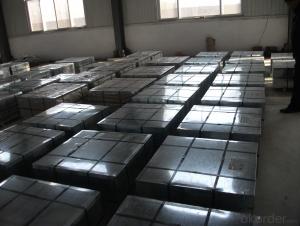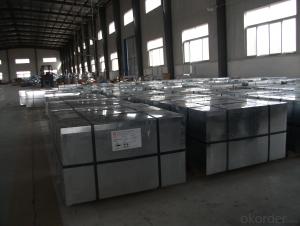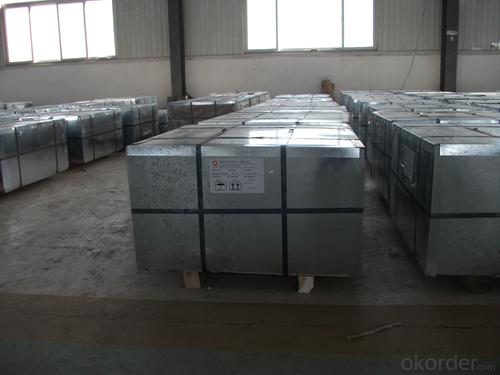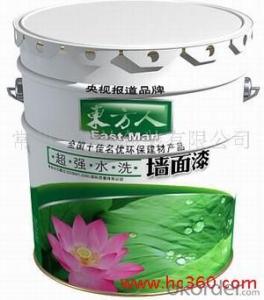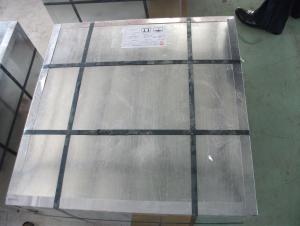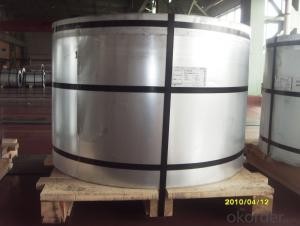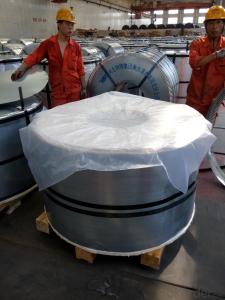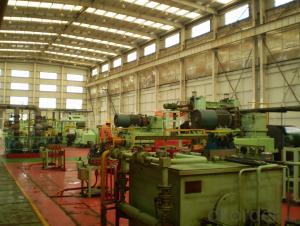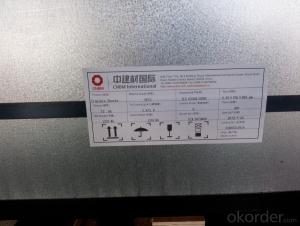TINPLATE OF Good or Secondary Quality
- Loading Port:
- China Main Port
- Payment Terms:
- TT OR LC
- Min Order Qty:
- -
- Supply Capability:
- -
OKorder Service Pledge
OKorder Financial Service
You Might Also Like
Our Tinplates Specification:
Standard: ISO 11949 -1995, GB/T2520-2000,JIS G3303,ASTM A623, BS EN 10202
Material: MR,SPCC
Thickness:0.15mm - 0.50mm
Width: 600mm -1150mm
Temper: T1-T5; DR8 - DR10;
Annealing: BA & CA
Passivation:311
Oil: DOS
Surface: Finish,bright,stone,matte,silver
Packing:
1、For sheets: plastic or waterproof paper, metallic cover and angles, steel strips,wooden pallet.
2、For Coils: plastic or waterproof paper,plastic protect plate,steel strips.
Coil Inner Diameter: 508mm
Weight: 6-10 tons/coil
Application: widely used in every kinds of packing cans,such as tea packaging cans, painting packaging cans, chemical packaging cans and dry food packaging cans; and also mechanical parts
Both Prime and Second Quality Are Available!!!
- Q: What are the main differences between tinplate and tinplate laminates in terms of design flexibility?
- Tinplate offers limited design flexibility as it is a single-layer material, while tinplate laminates provide greater design flexibility due to their multi-layer structure, allowing for the incorporation of different materials and finishes to achieve a wider range of design options.
- Q: How does tinplate contribute to the reduction of food waste?
- Tinplate contributes to the reduction of food waste by providing a highly protective and durable packaging material for various food products. Its corrosion-resistant properties and ability to maintain food freshness for extended periods help to prevent spoilage and extend shelf life. Additionally, tinplate's ability to be easily recycled promotes sustainable packaging practices, reducing environmental impact and further supporting efforts to minimize food waste.
- Q: How does tinplate affect the taste and quality of food?
- Tinplate, which is a thin sheet of steel coated with a layer of tin, is commonly used in food packaging. It has minimal impact on the taste and quality of food due to the inert nature of tin. This means that tin does not react with the food or alter its flavor. Additionally, tinplate provides a protective barrier against external factors such as light, oxygen, and moisture, thereby preserving the freshness and quality of the food inside the packaging.
- Q: How does tinplate packaging withstand extreme temperatures?
- Tinplate packaging is able to withstand extreme temperatures due to its high heat resistance and excellent thermal conductivity properties. This allows it to efficiently distribute and dissipate heat, preventing damage or deformation of the packaging. Additionally, the tin coating on the steel substrate provides a protective barrier that helps to preserve the integrity of the packaging even in extreme temperature conditions.
- Q: What are the factors that determine the lifespan of tinplate packaging?
- The factors that determine the lifespan of tinplate packaging include the quality of the tinplate material used, the manufacturing process, the storage and handling conditions, and the level of protection provided against external factors such as moisture, temperature, and physical damage.
- Q: Can tinplate packaging be used for medical products?
- Yes, tinplate packaging can be used for medical products. Tinplate is a durable and corrosion-resistant material that provides protection to the contents. It is commonly used for packaging various medical products such as ointments, creams, and small medical devices. Additionally, tinplate packaging offers excellent barrier properties against moisture, light, and oxygen, ensuring the integrity and longevity of the medical products.
- Q: How does tinplate perform in terms of tamper resistance?
- Tinplate performs well in terms of tamper resistance. Its strong and durable nature makes it difficult to tamper with or manipulate without leaving visible signs of tampering. Additionally, tinplate can be sealed tightly, making it hard for unauthorized individuals to access the contents without clear evidence of tampering.
- Q: How does tinplate perform in terms of temperature resistance?
- Tinplate performs well in terms of temperature resistance, as it can withstand high temperatures without warping or losing its structural integrity.
- Q: Can tinplate packaging be used for gift items?
- Yes, tinplate packaging can be used for gift items. Tinplate is a durable and visually appealing material that can be used to create unique and attractive packaging for various gift items. It offers excellent protection for the contents and can be customized with different designs and finishes to enhance the overall presentation of the gift.
- Q: Can tinplate be used for packaging agricultural products?
- Yes, tinplate can be used for packaging agricultural products. Tinplate is a type of steel coated with a thin layer of tin, which provides excellent protection against corrosion and preserves the quality of agricultural products. It is commonly used for packaging canned fruits, vegetables, and other perishable agricultural products. Additionally, tinplate is lightweight, recyclable, and offers a long shelf life, making it a suitable choice for packaging agricultural products.
Send your message to us
TINPLATE OF Good or Secondary Quality
- Loading Port:
- China Main Port
- Payment Terms:
- TT OR LC
- Min Order Qty:
- -
- Supply Capability:
- -
OKorder Service Pledge
OKorder Financial Service
Similar products
Hot products
Hot Searches
Related keywords

